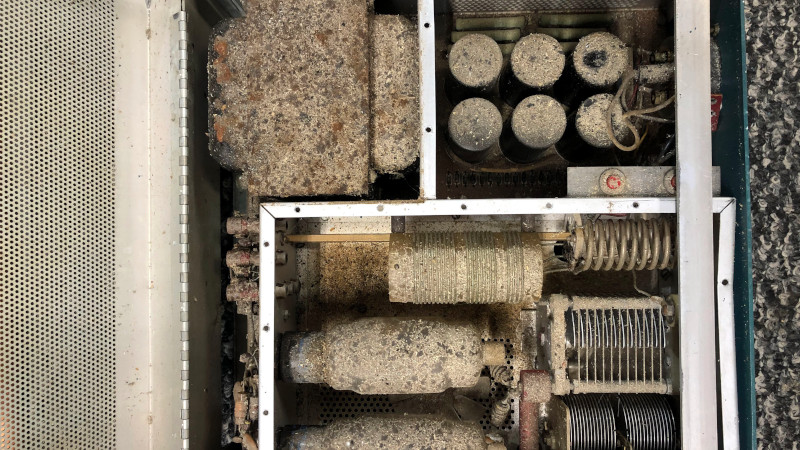Many of us will have found dusty forgotten pieces of electronics and nursed them back to health, but we were captivated by [Don]’s tale of electronic revival. Instead of perhaps a forgotten computer or television, his barn find was a Heathkit linear amplifier for radio amateurs. In that huge box underneath an impressive layer of grime were a pair of huge tubes, along with all the power supply components to give them the 2 kV they need. It should have been good for a kilowatt when new, can it be made to go on air again?
Perhaps understandably with such an old device, after cleaning away the dust of ages he replaced the power supply circuitry with new parts and PCBs. A linear amplifier is surprisingly simple, but because of the voltages and power concerned there’s a need to treat its power circuits with respect. On first power-up the filaments work and the rails come up, so when given some RF drive it comes alive. Coupled with a case restoration you’d never know how dreadful a state it had been in.
We like to see classic Heathkit devices here at Hackaday, though we’ve followed their more recent reappearance too.

















The SB200 was rated for 1kW INPUT power. Output will be in the 500-600W range. That’s still a useful step up for a typical 100W HF radio.
INPUT power 1 kW. OUTUT 500 to 600 W. Gain typically – 6 dB. I would recommend a straight coaxial cable (length 1 m) as a bypass. Even a lousy coax works well. Saves a lot of money and electricity. That’s a useful set up ;-))
I get it. Often extra power is a waste. I’m mostly a QRP operator myself, and I’ve never owned a high power amplifier. But I do know from using them at other stations that sometimes extra power is the difference between making a contact and not making it. If you care about getting that extra push, one of these older amplifiers is still a cost-effective way to get it. (Buying a new solid state amplifier in this power class will cost over $2,500.)
Alibaba has amazingly cheap linears.
Cheap enough to get one for each cellphone in the family!
I think the rating in the specs “1000 W PEP input” means it’ll hit that wattage of output if the input is at peak envelope power. Could be wrong. But it would be weird to have a 1kw input signal
The term “1000W PEP input” refers to “plate input power” the amount of DC power delivered from the power supply to the tube plates. When 1KW of DC is applied to 50-60% efficient tubes, the RF power to the antenna will be in the 500-600W range. Power was measured this way in the old days cz cheap RF wattmeters were not available. The power from the transmitter used to excite the tubes was referred as “drive power” and with this type of amp was in the neighborhood of 100 Watts.
I can literally smell the old electronics. It brings back memories of my childhood and youth. Back then, the only way to get hold of electronic components was to scavenge electrical devices from bulky waste.
Nothing beats the smell of that dust burning off the tubes. What an excellent job. Great story!
God, yes, I can smell it just reading this. Real radios glow in the dark! ( main rig is a Drake “C” line here)
But this may be old, but not a boatanchor. A linear amp hasn’t changed much in fifty years, unless you’ve gone to solid state. So it’s not sending you to the past like a Clegg Interceptor receiver.
Get up to a certain power level and TX amps still haven’t gone solid state. One of the few things that a tube is inarguably better at (if you’re willing to argue, there’s plenty more).
Mmm, fond memories of smelling the layers of nicotine warming up from my granddads linear amp. He was a CB guy, not HAM, and ran super illegal. I remember talking to Australia via skip as a wee little one in the Midwest US.
When linears are outlawed, only outlaws will have linears.
Uncle Charlie will continue to not be bothered. Unless you step on a military or aviation band. Make your neighbors microwave talk, no problem.
Hey, when did you break into my house and take pictures of the innards of my computer???
A well done restoration, both electrical and mechanical
Amazing job of restoration. The SB200 is still a viable upgrade in power over a typical 100 watt rig, but I wouldn’t have even attempted something that looked that far gone.